Introduction | Selection | Leland's Memoir | Photographs | Activities
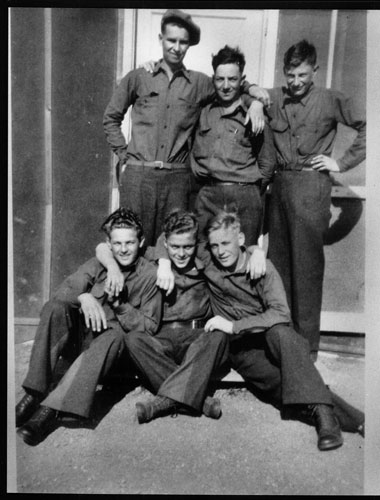
CCC members became good friends while
working on projects near Medora, ND.
CCC groups still have reunions
to renew their friendships.
0957-07
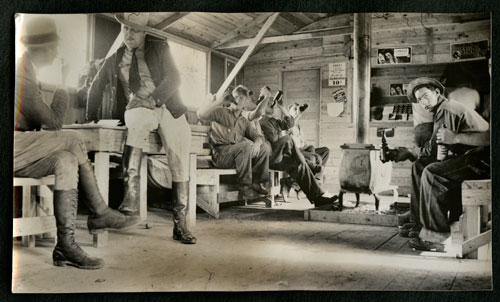
The canteen was a place where the men could
purchase sodas, candy, and other items. There
was space to relax and socialize. Here several
young men drink sodas while two officers talk at
another table. 10717 – Box4 – file 01 Album p 06-01
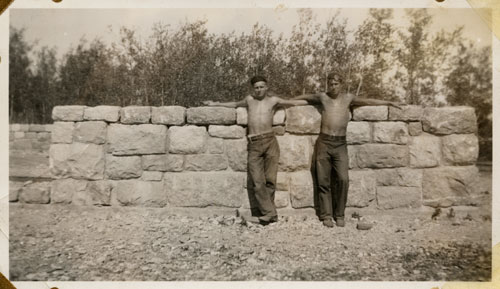
Two young men stand near a stone wall they
probably have been working on. CCC men learned
skills such as stonework and woodwork.
The stone and log structures they built are still
standing in many parks and national forest camps
around the country. Low, sturdy buildings of log
and stone were typical of state and federal tourist
sites in the 1930s. 10648 – file 2 – 02
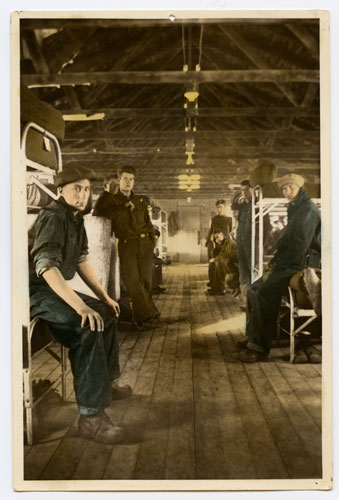
Men lived in bunkhouses like these at the
International Peace Garden Camp 744 and ate in
mess halls – an organization that was similar to
Army life. The commanding officers of the CCC
camps were usually Army officers, though the
agency emphasized that the CCC was not a
branch of the military. 10648 file1 -02
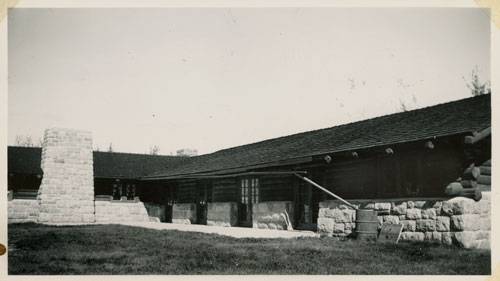
CCC Company 794 built this stone building at the
International Peace Garden along North Dakota’s
border with Manitoba. 10648 file 2 – 03
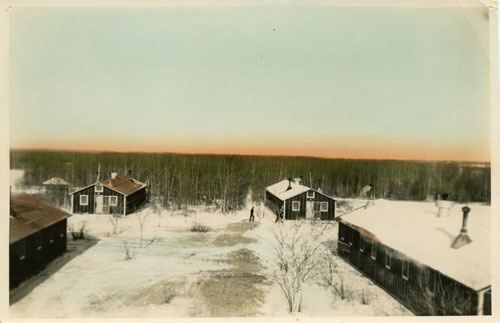
Bunkhouses, mess halls, canteens and other CCC
buildings were temporary. In some states, CCC
men lived in tents, but in North Dakota, severe
winters required that they have buildings. These
buildings at CCC Camp 744 at the International
Peace Garden were covered with tar paper and
were constructed to be torn down after the
project was completed. This photograph was
taken in 1935 by Thomas Falck, of Lignite, ND.
10648 – file 1-03
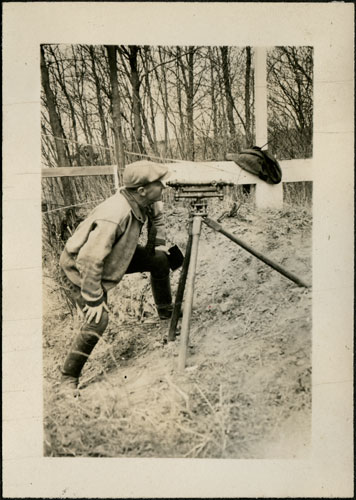
Building roads and structures required careful
surveying – another skill CCC workers could
learn on the job.
10717 Box 03 – file 04 Album p.3- 02
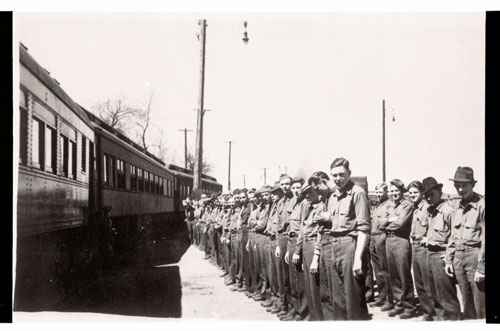
One advantage for the CCC men was travel to
other parts of the country. These young men with
a North Dakota company had been working in
Arkansas and were preparing to return to
Bismarck, ND in 1936. 10648 – file 04-23
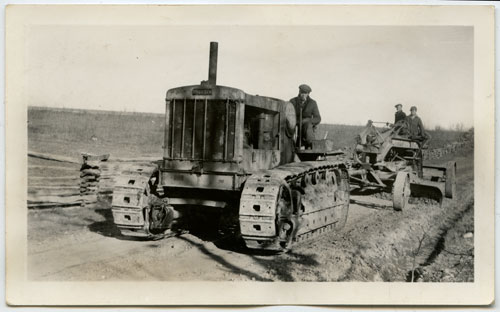
CCC workers learned skills such as driving trucks
and tractors, cutting and placing stone, road
building, and wood cutting. Though the CCC was
not a vocational program, many young men were
discharged with new work skills.
10717 Box 03 File 03-01
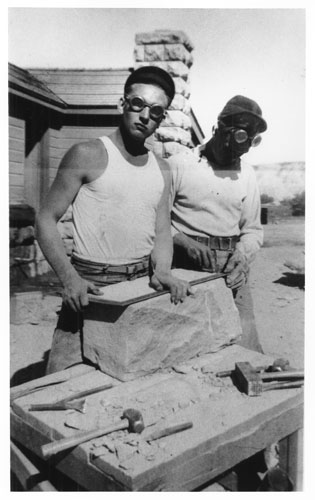
CCC members cut stone to build structures for
the park that would become Theodore
Roosevelt National Park near Medora.
Goggles protect their eyes from stone chips.
0957-03
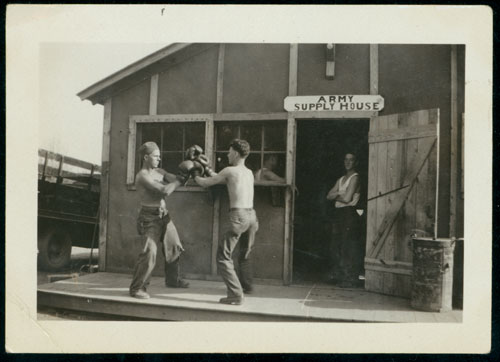
As in many other associations of young men,
sports were an important leisure time activity.
These two young men are practicing boxing – or
perhaps just pretending to box – at CCC camp
2760 near Wishek, ND. 10648 file 03 – 24
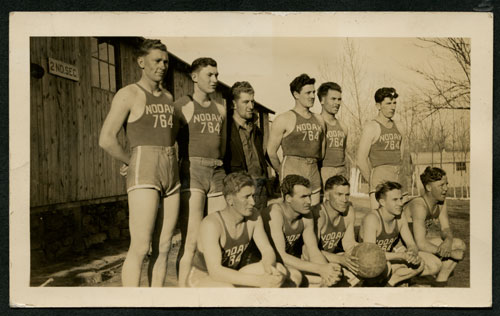
Members of the CCC Company 764 formed a
basketball team. They proudly wore NODAK 764
on their jerseys. They may have been working
in Arkansas at the time.
10717 – Box 4 – file – 01 – Album p 05-01









